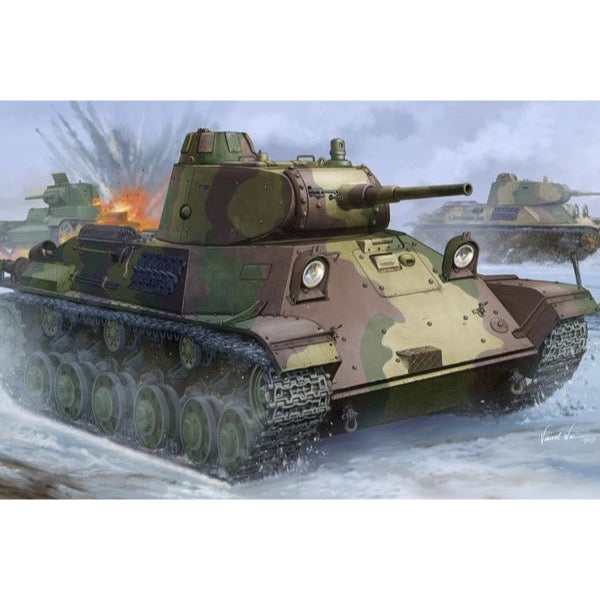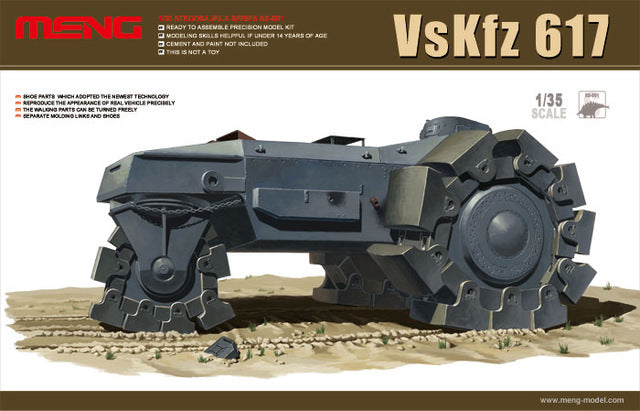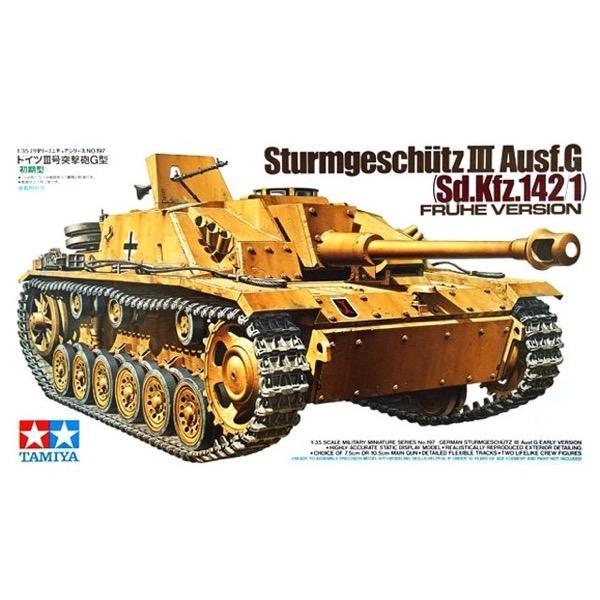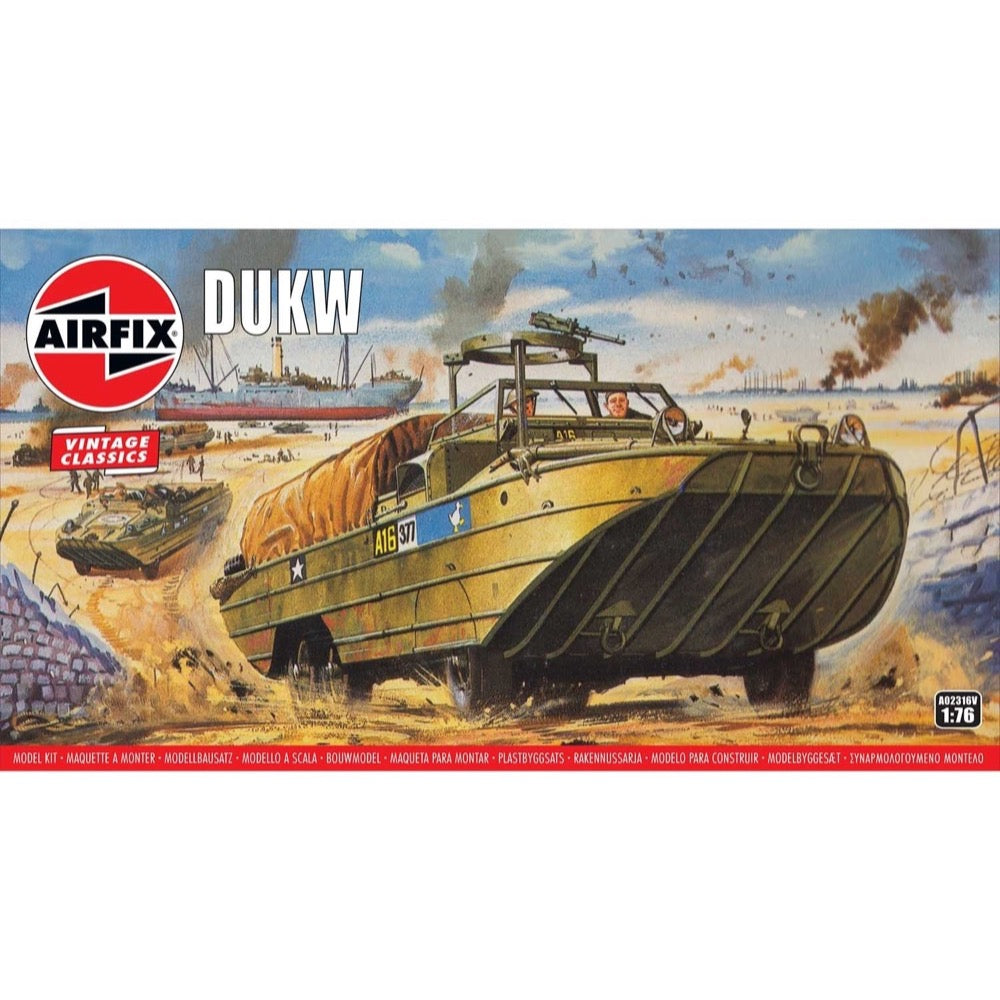
Airfix A02316V 1/76 DUKW Amphibious Truck
10.00
$
<p>The DUKW (popularly pronounced 'duck') is a six-wheel-drive amphibious truck that was designed for transporting goods and troops over land and water. The DUKW was used in landings in the Mediterranean, Pacific and on the D-Day beaches of Normandy.</p><p>If you're looking for something extra unique or different for your Airfix model or military collection then the DUKW will tick all those boxes. With only 50 pieces in each kit and measuring 125mm, both experienced and first-time Airfix enthusiatst will adore this model!</p><h3>Specifications</h3><ul>
<li>Item Length - Without Packaging (cm): 12.5</li>
<li>Item Height - Without Packaging (cm): 2.87</li>
<li>Item Width - Without Packaging (cm): 3.3</li>
<li>How many pieces will be found in the box opened by the customer?: 50</li>
<li>Item Scale: 1:76</li>
<li>Contents (what's in the box) sets: Sprues & decals</li>
<li>Finish: Plastic</li>
<li>Number of Scheme options: 1</li>
<li>Skill Level: 1</li>
<li>Flying Hours: 1</li>
</ul>
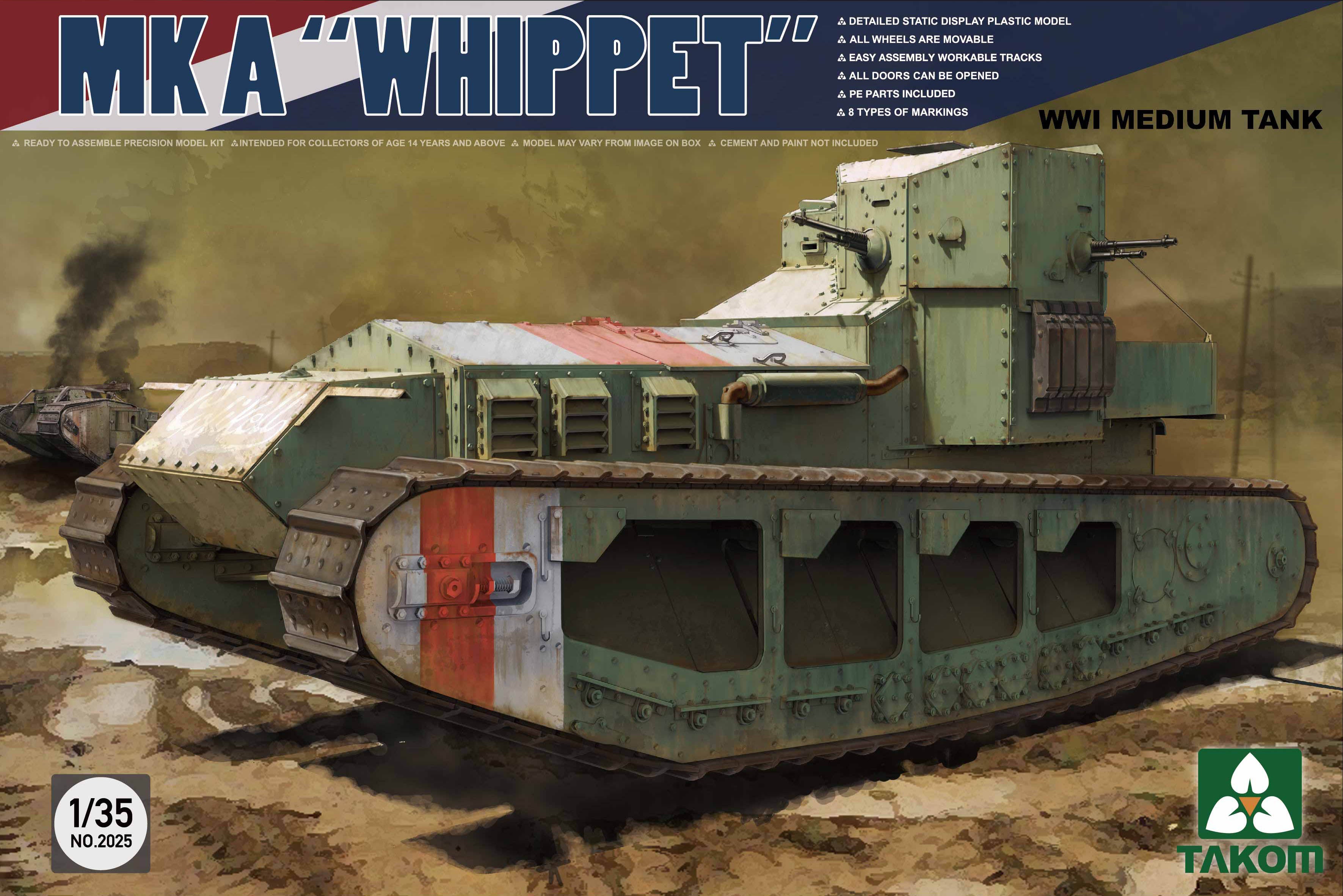
Takom 2025 1/35 WWI Medium Tank Mk A Whippet
23.00
$
<p>The Medium Mark A Whippet was a British tank of the First World War. It was intended to complement the slower British heavy tanks by using its relative mobility and speed in exploiting any break in the enemy lines. Whippet tanks later took part in several of the British Army's postwar actions, notably in Ireland, North Russia and Manchuria.</p>
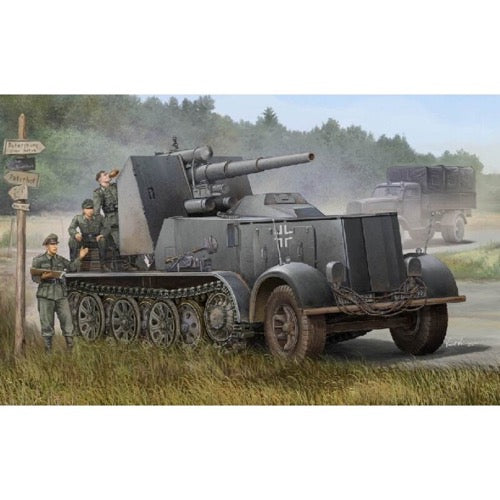
Trumpeter 01585 1/35 German 8.8mm Flak Gun
46.00
$
<p>In 1939, 10 Sd.Kfz8 DB S8 and DB9 were transformed into tank destroyers, equipped with a Flak18 88mm anti-aircraft gun. The gun has only one gun mantlet, and the rest are designed to be open, so the crew has no protection when manipulating the gun. All 12-ton half-track tank destroyers were incorporated into the 8th Anti-Tank Battalion and participated in the invasion of Poland in 1939, France in 1940, and Operation Barbarossa in 1941.</p>
<h3>Features</h3>
<ul>
<li>The kit consists of over 780 parts</li>
<li>The kit w/refined detail</li>
<li>Rubber tires w/fine detail</li>
<li>120 individual tracks links</li>
<li>Photo-etched parts included</li>
</ul>
<h3>Specification</h3>
<ul>
<li>Model Size Length: 203.8 mm Width: 68.6 mm</li>
<li>Total Parts: 780+</li>
<li>Metal parts: copper tube, gun barrel, chain</li>
<li>Etching parts: 2 pcs</li>
<li>Total Offset: 25 sprues , engine cover and tires<br>
</li>
<li>Water decal painting: German Army</li>
</ul>
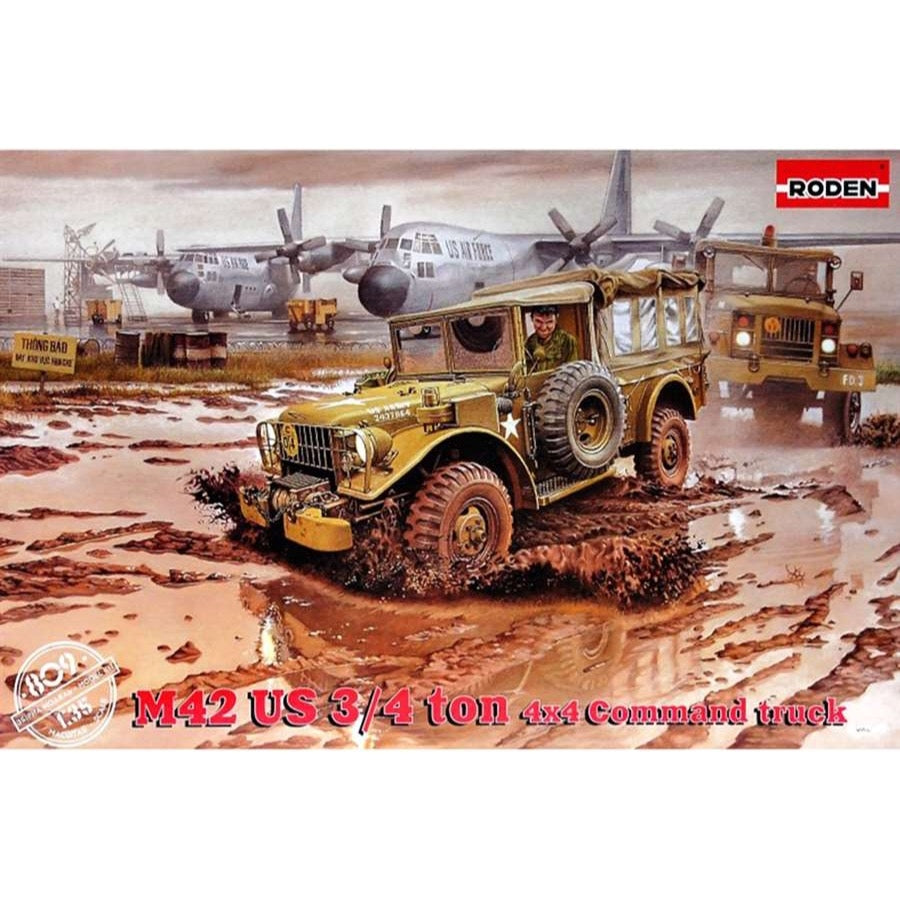
Roden 809 1/35 M-42 US 3/4 ton 4x4 Command Truck
27.00
$
<p>Among the huge number of different trucks used by the American army throughout the modern era (since World War II), only some can rightfully be called legendary, as it is difficult to distinguish the part they played in terms of the widespread use of the vehicles in everyday military life. One such truck was the M37 developed by the Dodge company in 1950, which incorporated all the best features of its WWII predecessors. </p>
<p>The M37, along with the previous models in the WC series, had a 6-cylinder engine of 230 cubic inches (3.8 liters), and a four-speed non synchronized gearbox. However, its chassis was lengthened, and the driver's cabin was separated from the body. The truck also received a new two-speed transmission. The design was successful and in 1951 around 11,000 units of this type were built, and in the next three years more than 50,000 units. The emergence of the new machine was timely – in the middle of 1950 the Korean War began, in which the U.S. was directly involved before three years were out. In actual military operating conditions, the M37 quickly found itself indispensable, and many special vehicles were developed from it (a command truck, a communications vehicle, an airfield fire engine, an ambulance, etc.), and so it became a real find for the army. </p>
<p> The M42 Command Car, adapted from the basic M37 truck, was not a separate production series. To adapt an ordinary M37 into the M42, the Dodge firm produced a special kit to enable the rapid conversion of a standard truck into a Command Car. This kit consisted of an awning of a new type with side windows, a split rear end curtain, stronger internal lighting which permitted consideration of military maps directly in the vehicle during field meetings, and a folding table in the middle of the car body. Also, M42s were fitted out with more powerful radio equipment for more reliable communications in field conditions. When processing the standard truck into the Command Car, it was obligatory to change an individual dataplate inside the driver's cabin, which was then noted for the converted vehicles in a military report. M42 numbers in comparison with the standard M37 were rather small, however in conjunction with the 'ordinary' trucks of this type they also participated in many of the military conflicts of the second half of the 20th Century. </p>
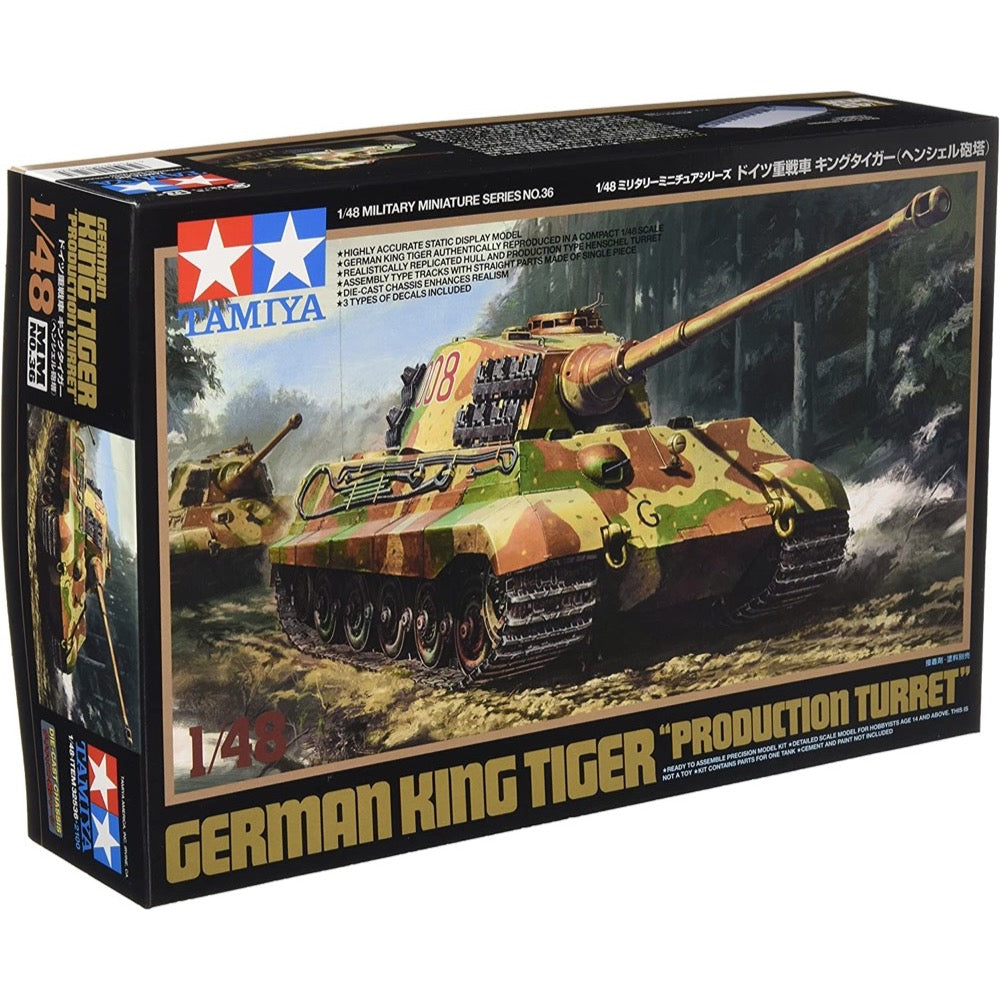
Tamiya 32536 1/48 German King Tiger Early
17.00
$
<h3>The German Army's Most Formidable Weapon</h3>
<p>Making its debut on the battlefield in 1944, the King Tiger heavy tank immediately struck fear into the hearts of Allied soldiers unlucky enough to face it. The first 50 models featured a Porsche designed turret, however in mass production runs a Henschel design turret was adopted. Designed for defense and attack, the King Tiger featured thick 150mm armor on the front and 80mm armor on the sides, and a 88mm L71 high velocity main gun capable of penetrating 170mm thick armor at a distance of 1,000m. Auxiliary armament included two 7.92mm machine guns mounted on the front hull section and on the turret. The extremely thick armor on the turret front measured 185mm and 88mm on the side panels. This massive tank was driven by a 700hp Maybach HL230 P-30 12 cylinder liquid cooled engine.</p>
<h3>The successor to Tiger I </h3>
<p>180mm thick armor and powerful 88mm gun of the King Tiger struck fear in the hearts of all
Allied troops that had the misfortune of facing this beast. This kit realistically replicates the
production type tank with angular Henschel turret. The1/48 scale King Tiger is the perfect
centerpiece for a diorama depicting late WWII battles, such as the Ardennes front. </p>
<p>In order to counter the increasing threat of Russian tanks during the latter part of WWII, Germany
began developing a new heavy tank, the King Tiger. The first 50 models featured a Porsche
designed turret, however in mass production runs a Henschel design turret was adopted.
Designed for defense and attack, the King Tiger featured thick 150mm armor on the front and
80mm armor on the sides, and a 88mm L71 high velocity main gun capable of penetrating
170mm thick armor at a distance of 1,000m. Auxiliary armament included two 7.92mm machine
guns mounted on the front hull section and on the turret. The extremely thick armor on the turret
front measured 185mm and 88mm on the side panels.This massive tank was driven by a 700hp
Maybach HL230 P-30 12 cylinder liquid cooled engine.
</p>
<h3>Features</h3>
<ul>
<li>High-quality assembly kit display model of the King Tiger heavy tank with production turret.</li>
<li>Length: 211mm</li>
<li>Separately-molded crew hatches can be modelled in both open and closed positions.</li>
<li>Die-cast chassis for added weight and realism.</li>
<li>Assembly type tracks come with one-piece straight sections featuring realistic sag effect.</li>
<li>3 types of markings included.</li>
</ul>
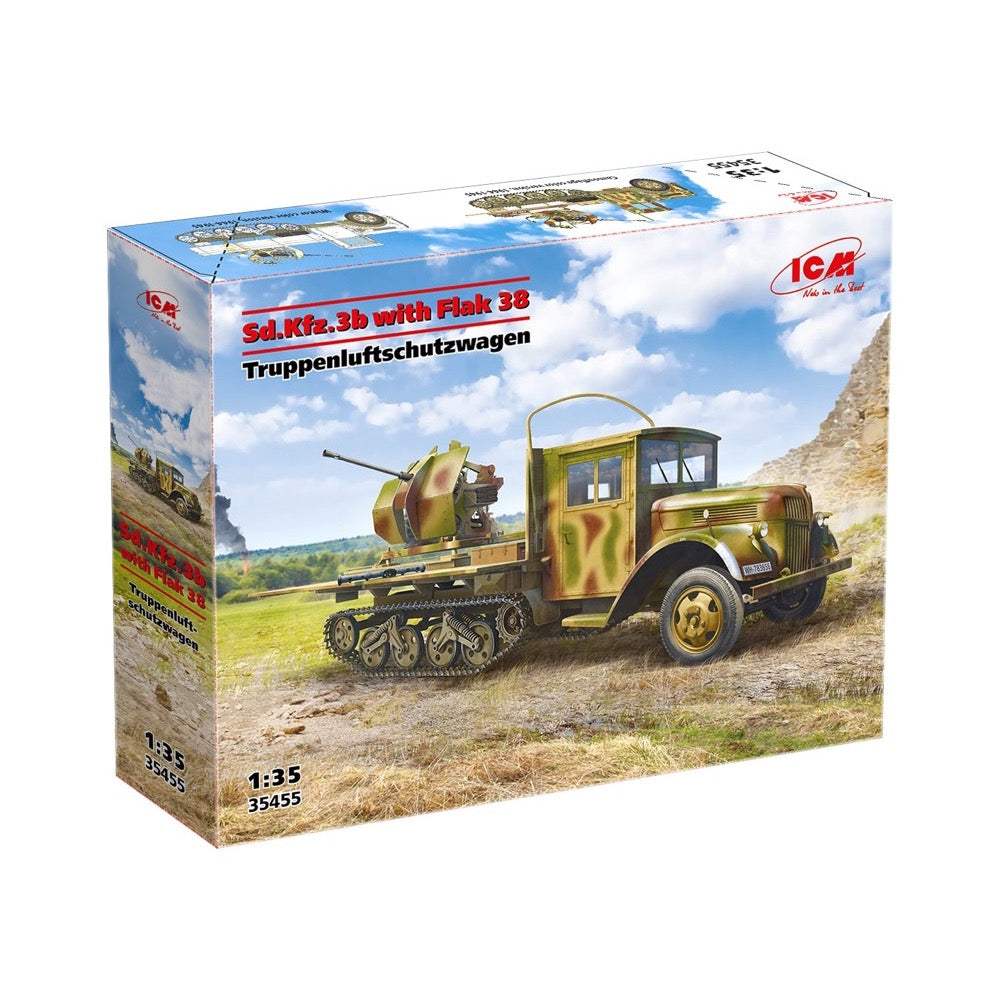
ICM 35455 1/35 Sd.Kfz.3b with Flak 38 Truppenluftschutzwagen
49.00
$
<p>The 2 cm Flak 38 anti-aircraft gun began entering service with the Wehrmacht in the second half of 1940. With its reliable design and high rate of fire (up to 480 rounds per minute), it was an effective means of close-range air defense in the Wehrmacht, and its production continued until the end of World War II. In addition to targeting aircraft, the gun could also be used against lightly armored targets. To increase mobility, anti-aircraft guns were often mounted on various vehicles, both wheeled and semi-tracked. One such vehicle was the semi-tracked version of the widely used Wehrmacht truck, the V3000S, which was designated as Sd.Kfz.3b (also known as the V3000S/SSM). The anti-aircraft guns were mounted in the vehicle’s bed and could be placed either on special platforms or without them. For firing, the sides of the vehicle’s body were either folded down or completely removed. Vehicles equipped in this way became self-propelled anti-aircraft installations, which the German Army used for air defense tasks across all fronts during World War II.</p>
<h3>Specifications</h3>
<ul>
<li>Model size (length x height): 212 x 93 mm</li>
<li>Box size: 294 x 230 x 58 mm</li>
<li>Number of details: 245</li>
</ul>
<h3>Markings</h3>
<ul>
<li>Sd.Kfz.3b with 2 cm Flak 38 AA Gun (сamouflage color version), 1944-1945</li>
<li>Sd.Kfz.3b with 2 cm Flak 38 AA Gun (winter color version), 1944-1945</li>
</ul>
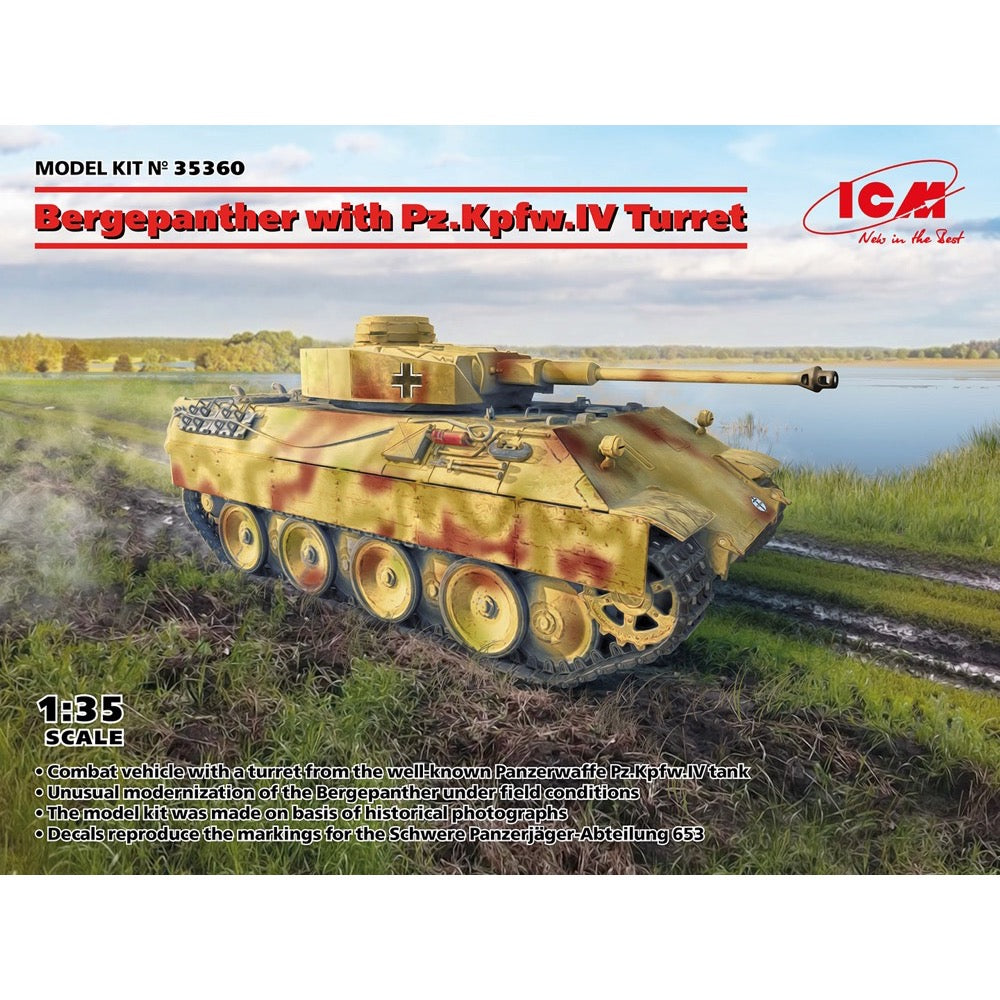
ICM 35360 1/35 Bergepanther with Pz.Kpfw.IV Turret
35.00
$
<h3>Bergepanther with Pz.Kpfw.IV Turret</h3>
<p>The Pz.Kpfw.V Panther tank is considered by many specialists to be one of the best tanks of World War II. Its reliable armor and powerful firepower made this tank a formidable opponent on the battlefield. Various combat vehicles were produced based on its chassis, including the armored recovery vehicle (ARV*) Sd.Kfz. 179 Bergepanther. One of the unusual modifications of this vehicle was produced in the 653rd Heavy Panzerjäger Battalion (Schwere Panzerjäger-Abteilung 653). A turret from another tank, the Pz.Kpfw.IV, was installed on the chassis of the ARV, thus converting the Bergepanther into a command vehicle. According to some researchers, this turret was fixed, and instead of a gun, its dummy was installed, allowing the space inside the armored hull, free from the gun, to be used for additional radio stations and work with combat maps. It is likely that such a modification was made only on one specimen. This vehicle was part of the combat strength of the Schwere Panzerjäger-Abteilung 653, and its use occurred in the spring of 1944 in the area of Ternopil, Ukraine.</p>
<!---->
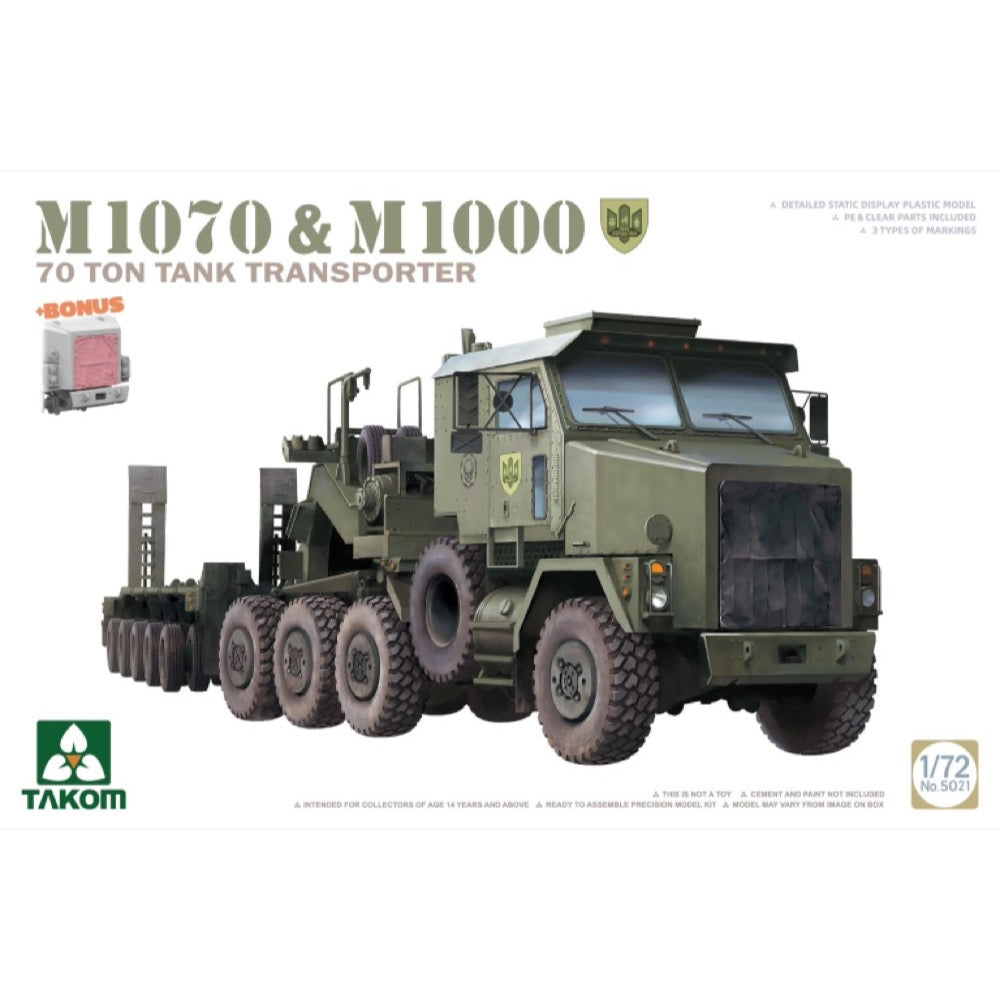
Takom 5021 1/72 M1070 and M1000 70 Ton Tank Transporter
26.00
$
<p>The M1070 tractor and M1000 trailer are currently used by the U.S. military as tank carriers, and the tractor and trailer are collectively known as HETS (Heavy Equipment Transport System). The M1070 was produced by Oshkosh in 1992, and has been in use by the U.S. military since 1993; it is mainly used to transport the M1 Abrams main battle tank, but also armored personnel carriers, self-propelled artillery, bulldozers and more. It is also used to transport large vehicles.</p>
<h3>Features</h3>
<ul>
<li>Detailed Static display plastic model</li>
<li>PE & Clear parts included</li>
<li>3 types of markings</li>
</ul>
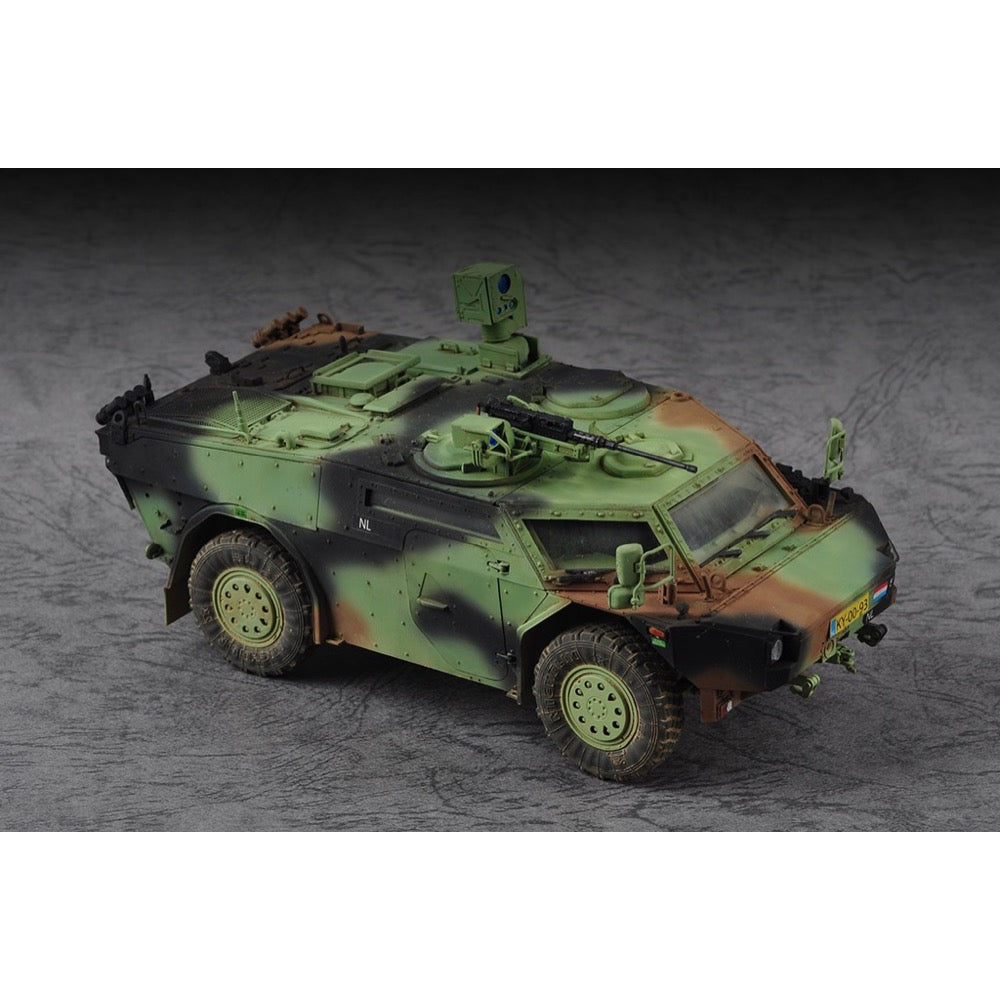
Trumpeter 07401 1/72 German Fennek LGS Dutch Version
7.00
$
<h3>This model kit from Trumpeter is a completely new mold!</h3>
<p>The Fennec light armored reconnaissance vehicle was jointly developed by the German Federal Army and the Dutch Army; it has a low silhouette suitable for reconnaissance missions and a form unique to modern vehicles, precisely molded.</p>
<p>Kit consists of 50 parts, includes rubber wheels. Decal sheet includes two (Dutch) markings, including one International Security Assistance Force (ISAF), the international military mission in Afghanistan from 2001 to 2014.</p>
<h3>Specification</h3>
<ul>
<li>Length: 75mm Width: 36mm</li>
<li>Total Sprues 2 sprues , upper hull , lower hull and tires</li>
</ul>


